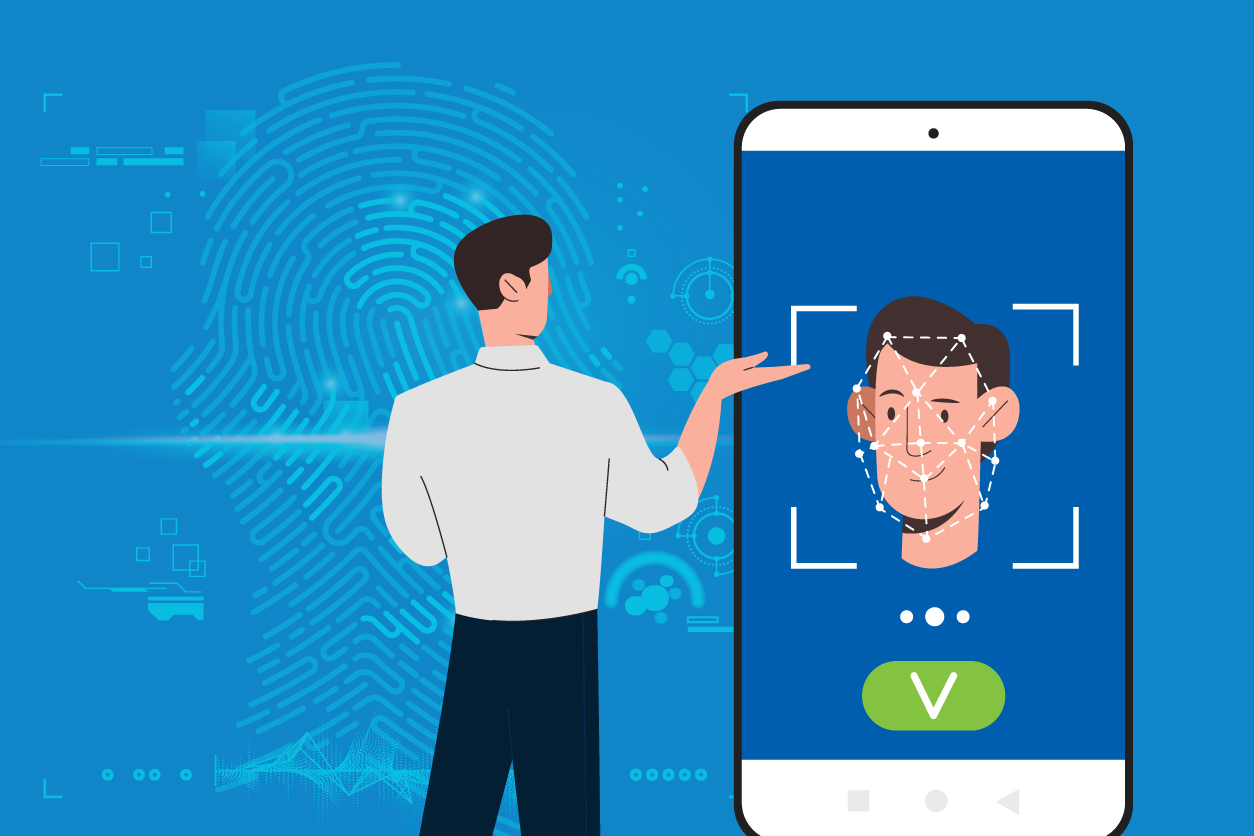For many businesses, digital transformation has become an urgent competitive necessity, especially with customer expectations rising to unprecedented levels.
The rapid acceleration of digital transformation has reshaped the very fabric of how businesses function — this has led to digital identity emerging as a cornerstone, making businesses realise that maintaining an authentic and strong digital presence is invaluable in navigating this digital landscape.
To make this possible, organisations need to develop a robust digital identity strategy, and that is exactly what we will be shedding light on in this post. Here, we uncover the importance of creating a digital identity strategy and how it stands as a non-negotiable asset for businesses across different industries.
The Digital Landscape in 2024
In today’s digital landscape, several digital trends have surfaced, highlighting the need for a digital identity strategy. These include:
Increased Adoption of Hybrid and Remote Work Environments
In recent years, more businesses have shifted from office-based to hybrid and remote work environments. This has introduced new risks associated with insufficient endpoint security and lack of identity authentication, proper access control, and employee security awareness.
IoT Proliferation
According to Forbes, there will be 207 billion devices connected to the global IoT network in 2024.
Businesses that rely on IoT devices face increasing security challenges. A single IoT device can act as an entry point for cybercriminals to breach your entire IoT network, and with every new IoT device added to your network, the attack surface expands.
Quantum Computing
Traditional encryption techniques are very hard to breach, but with quantum computing, things could change in the near future. While quantum computing decryption techniques are still mostly theoretical, the risk is still here. Research regarding quantum-resistant cryptographic algorithms is currently in progress, which aims to safeguard digital certificates from quantum attacks.
E-commerce Expansion
The E-commerce industry has witnessed unprecedented growth in recent years, with the E-commerce market projected to grow to USD$5.5 trillion by 2027. As a result, digital transactions have increased exponentially, opening new doors for fraud, identity theft, and loss of personal data.
Businesses that operate e-commerce stores have started realising the importance of digital identity management in protecting customer data, establishing online trust, and meeting compliance requirements.
Understanding Digital Identity
A digital identity comprises the representation of an entity, device, or individual online. Similar to physical identities, a digital identity authenticates users online to create a safe and trustful environment on the web, both for service providers and customers. A few examples of digital identity include email, digital certificates, and identifications.
A digital identity typically includes the following components:
-
Information about the entity or person
-
A third party – typically a certification authority – to verify the identity and issue the certificate
-
User trust
Digital identity integration has reshaped business processes in different ways:
-
Security: Businesses now rely on digital identities to protect sensitive data from exploitation.
-
Operational efficiency: Digital identity management has made it possible for businesses to improve their security posture with streamlined identity authentication techniques.
-
Customer experience and personalisation: Digital identities enable you to provide a seamless customer experience with facilitated and secure access to products and services. The approach to online identities has also made it easier for businesses to tailor and personalise their offerings to meet customer preferences and needs.
-
Compliance: Organisations maintain digital identities to meet compliance standards related to user data privacy and security.
Digital Identity Lifecycle Management
Digital Identity Lifecycle Management is the process of issuing, renewing, and in case of breach, revocation of digital certificates. Organisations that have digital certificates use lifecycle management tools to automate lifecycle actions, review their certification management processes, maintain certificate validity, and eliminate risk related to certificate compromise.
Investing in proper Digital Identity Lifecycle Management is vital for your business to maintain the security of device, user, and machine digital identities and ensure secure online communications, both internally and externally.

The Business Case for a Digital Identity Strategy
A digital identity strategy is crucial for mitigating cyber security risks, such as supply chain, IoT, Man in the Middle (MitM) and phishing attacks. It’s also vital for meeting different regulatory compliance requirements centred around user data privacy and security, such as GDPR, HIPAA, and PCI-DSS.
As we’re moving to SSL certificates with shorter validity periods - 90 days to be more specific - it’s become more important than ever to adapt your digital identity strategy to the evolving identity protection standards and implement seamless certificate management and renewal.
With a shorter digital certificate validity, you can ensure more reliable authentication and streamline operations by limiting data exposure and providing your team with more control over who can access information.
To add, a digital identity strategy boosts your business’s operational efficiency by cutting down the costs of mismanagement and streamlining service delivery. With digital identities, you can create efficient workflows built around regulatory requirements and data protection needs.
Strategic Advantages for Technology Companies
A digital identity strategy offers technology companies a powerful competitive edge. By implementing such a strategy, companies can solidify their position in the market by showcasing a robust and secure digital identity infrastructure. This instils confidence in customers, elevating the company's reputation and trustworthiness.
Embracing a digital identity strategy allows companies to position themselves as market leaders in terms of trust and security. Establishing a strong identity management system not only attracts customers seeking reliable services but also sets a precedent for industry standards, making the company a beacon of trustworthiness.
Furthermore, this strategy serves as a catalyst for innovation within technology firms. It opens doors for the creation of new service offerings and paves the way for ground-breaking innovations. By leveraging digital identity solutions, tech organisations can focus on creating new cutting-edge products and services, thus propelling the company ahead in the competitive landscape while meeting the changing customer needs.
Building a Digital Identity Strategy
Crafting a digital identity strategy starts with choosing the right tech and how you will deploy and implement it. This includes:
-
How this tech integrates with your systems
-
Ensuring secure data storage and retention
-
Relying on a single login ID for each user or device
-
Keeping access privileges at the bare minimum for information access
-
Introducing the tech to your team and helping them adapt
Once you have formulated a strategy, it is important to follow these best practices to make the most out of your digital identity management efforts:
-
Implementing a Zero Trust approach: The Zero Trust architecture assumes no user or device must be trusted. Maintaining a Zero Trust approach minimises exposure to threats.
-
Multi-Factor Authentication (MFA): MFA authenticates users more strictly by requiring an additional login factor other than a password like a One-Time-Password (OTP) sent to the user’s email. Ideally, MFA should be implemented along with a strong password policy.
-
Privileged Access: Limit and regularly review and update user access based on their job functions to minimise risk.
-
Policy enforcement: Monitor employee activity to ensure that your digital identity policies are adhered to.
-
Utilising automated workflows: Automated workflows eliminate process complexity and ensure timely certificate issuance, renewal, and revocation.
The Role of SSL Certificates in Maintaining Digital Identities
SSL (Secure Socket Layer) is an encryption protocol used to authenticate website identities. Currently, SSL is succeeded by TLS (Transport Layer Security) due to several security vulnerabilities discovered in SSL. TLS is another, more up-to-date encryption protocol that is widely used to maintain website identity and establish online trust.
Both protocols are closely related, leading people to refer to TLS as SSL/TLS, or even just SSL. However, in practice, most modern web browsers do not recognise SSL. Currently, TLS is the widely used protocol for maintaining website identity.
How Partnering with an Identity Authority Can Benefit Your Business
Partnering with an established identity authority, like GlobalSign, gives you access to robust digital identity solutions that help you establish a strong digital identity and earn user trust. Some of the benefits of such a partnership include:
Streamlined Credential Management
An Identity Authority simplifies credential management tasks, allowing you to prioritise essential business endeavours. It oversees the verification, issuance, and revocation of digital certificates, minimising your direct involvement. By optimising your digital identity management processes, you can improve efficiency while fortifying security throughout your digital infrastructure.
Strengthened Security Measures
Domain authentication heightens security, fostering safer transaction environments. Identity Authorities reduce dependence on easily compromised passwords by issuing personalized digital certificates, significantly enhancing overall security protocols.
Scalable and Compliant Solutions
Identity Authorities offer adaptable, cloud-based systems that can accommodate your organisation's growth trajectory without disrupting ongoing operations or jeopardising data integrity. Moreover, reputable Identity authorities meet the requirements of standards such as PCI DSS, GDPR, and HIPAA to showcase their dedication to safeguarding digital identities.
Partnering with a compliant Identity Authority signals your dedication to meeting stringent compliance requirements, bolstering credibility with potential clients seeking trustworthy channel partners.
Final Words
To recap, investing in a digital identity strategy in 2024 is essential for your business to:
-
Meet compliance requirements
-
Maximise operational efficiency
-
Protect your business against the evolving cyber threats
-
Streamline identity and certificate management
-
Provide customers with a trustful and personalised experience across different touchpoints
Ready to develop your digital identity strategy with GlobalSign? Talk to one of our experts today to discuss your needs.







